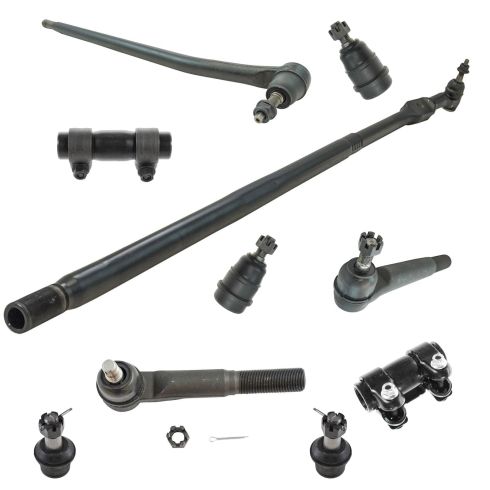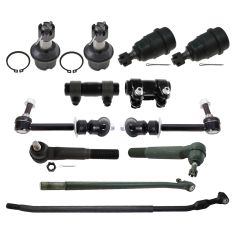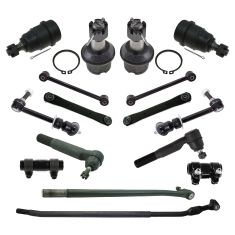1ASFK05442-Dodge Ram Front 10 Piece Steering & Suspension Kit TRQ PSA64793

Replaces
2011 Ram 2500 Truck 4 Wheel Drive Front 10 Piece Steering & Suspension Kit TRQ PSA64793

Product Reviews
Loading reviews
5.00/ 5.0
5
5 reviews
Fast and well boxed
August 25, 2020
after using a name brand Ball joint set with name brand price in less than 12 months the boots just came apart so i went looking for a replacement set and i am very pleased looks good fit well these people seem like thay are trying to find good parts at a fair price i am happy i found them thanks 1Aauto.
Perfect Fit
December 1, 2020
I work for a local Chevrolet Dealership so off make parts are always a crap shoot. But I ordered this kit for a trade in that was very unsafe to drive. When it showed up the box was in bad shape and 2 pieces were missing. I contacted 1A auto and without any questions they resent the parts. The parts fit perfectly with no modifications required. Truck is sold and the customer is very happy with his purchase.
good kit
March 14, 2022
Installed the kit on my truck, did an alignment and now drives like new.
May 22, 2022
Fast and correct
It works
December 24, 2022
Everything think was right and fit together great.
Customer Q&A
Are the parts grease able?
June 19, 2020
10
Thank you for your inquiry. Our steering and suspension components come pre-greased, sealed for long life, and do not require the extra maintenance typically required by greasable versions. Please let us know if you have any further questions.
June 20, 2020
A C
Is this for a cummins?
August 22, 2020
10
yes it is
August 22, 2020
Kevin J
10
Yes, This will fit the cummins. Please let us know if you have any other questions!
August 22, 2020
Curtis L
10
No, Sir
August 23, 2020
Rachel M
I have a five in lift, will it still work?
November 19, 2020
10
We have 08 these parts did not fit because theres a lift kit on truck
November 19, 2020
Rachel M
10
These will not work for lifted or lowered vehicles. Our parts are exact replacements for your vehicle's OEM parts. We recommend purchasing parts specifically for lifted vehicles to avoid any premature wear and avoid any fitment issues.
November 20, 2020
Curtis L
Will this work for a leveled only truck Its not lifted just leveled?
July 22, 2022
10
I installed on a 3 leveling kit no issues
July 23, 2022
Jordan Z
10
Hello, our parts are a direct replacement for the originals. They will not fit a modified vehicle.
July 23, 2022
Ricale A
I have a 2013 Ram 4 x4 with Cummins Diesel I know 2013 in part is the new gen 4 but looks like suspension is type 2012 Gen 3, so is this the right kit also hearing a lot about a type y and newer type t pitman arm will this fit my 2013 again I'm not s
July 29, 2022
10
This part will not fit your vehicle, but we may have a part that is listed to fit.
Please enter your vehicle's year make and model in the search bar at the top of the page. This will display parts guaranteed to fit your vehicle. Just be sure to verify all of the information shown in the Vehicle Fit tab before ordering.
August 1, 2022
Emma F
Ram is a registered trademark of FCA US LLC. 1A Auto is not affiliated with or sponsored by Ram or FCA US LLC.
See all trademarks.

















